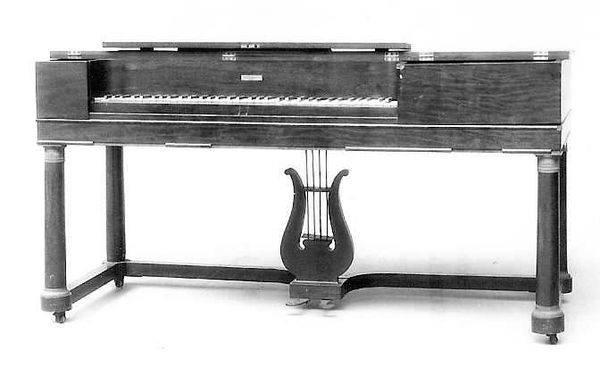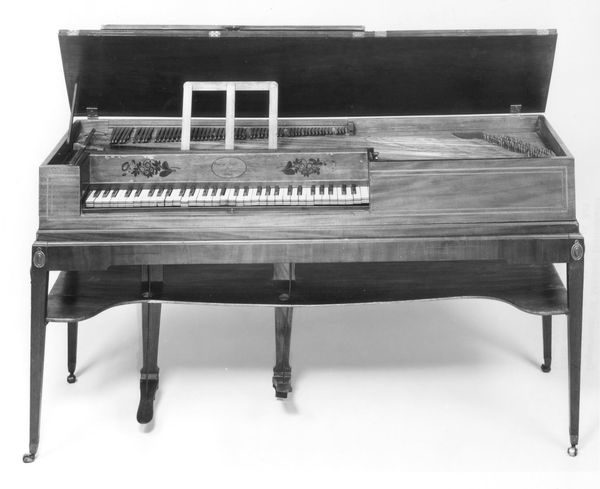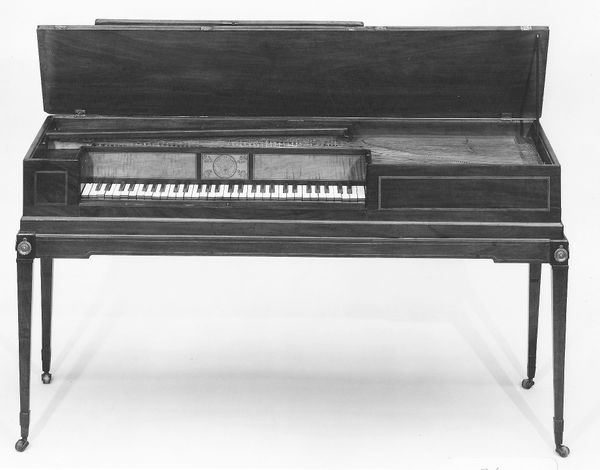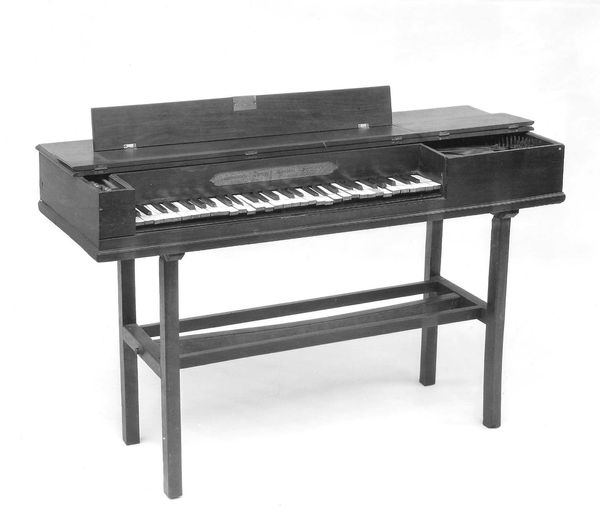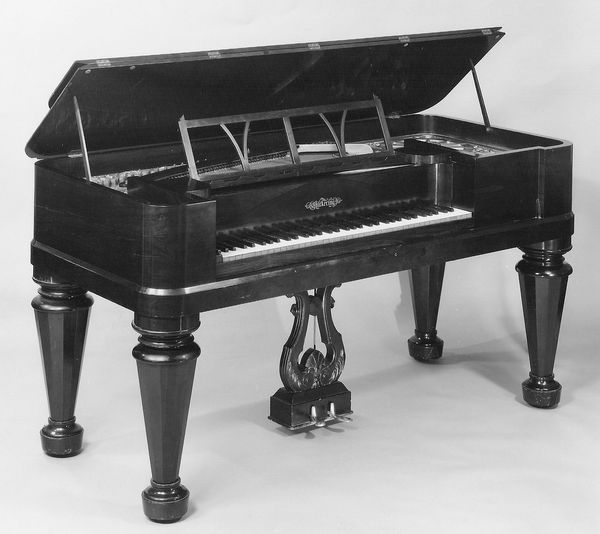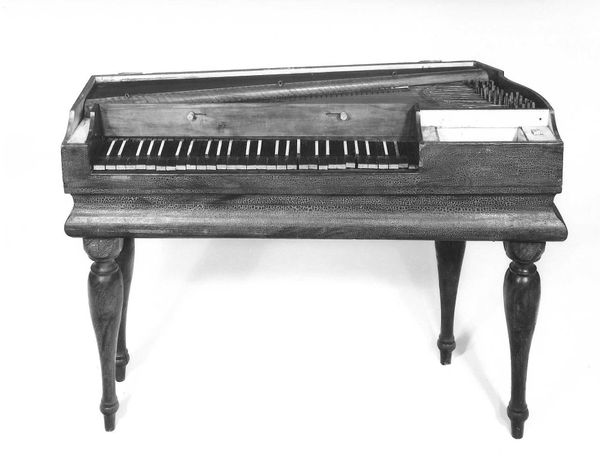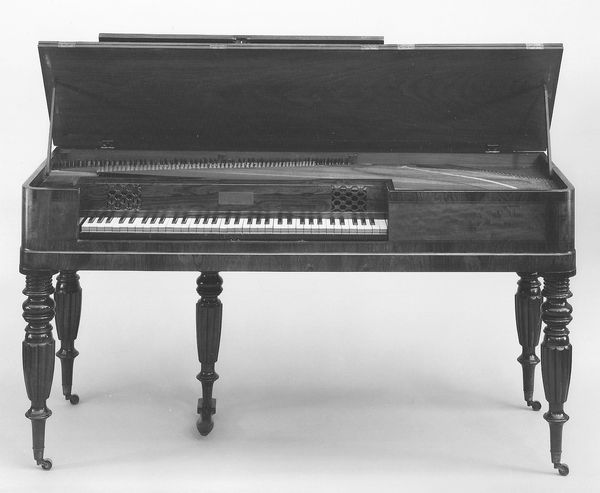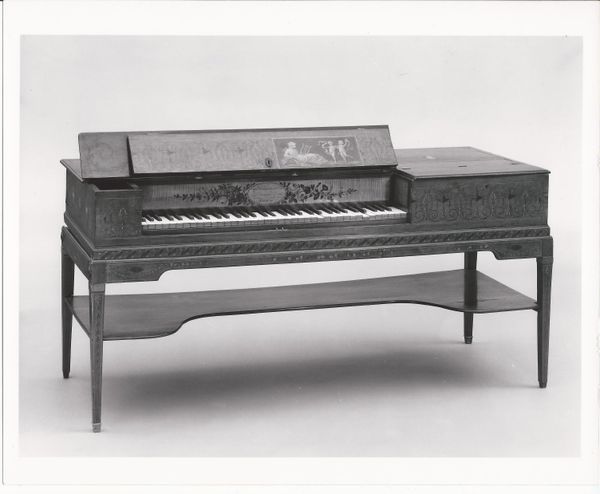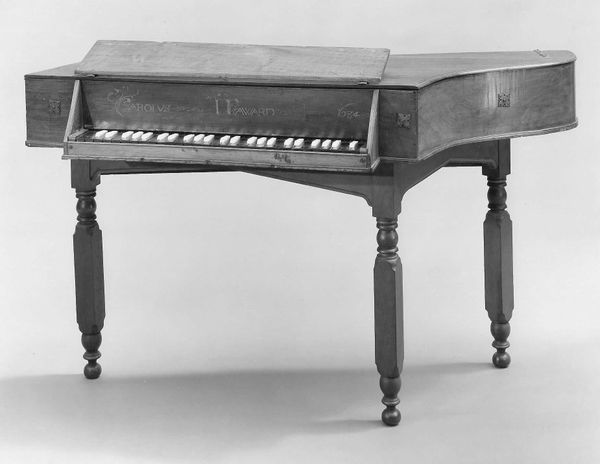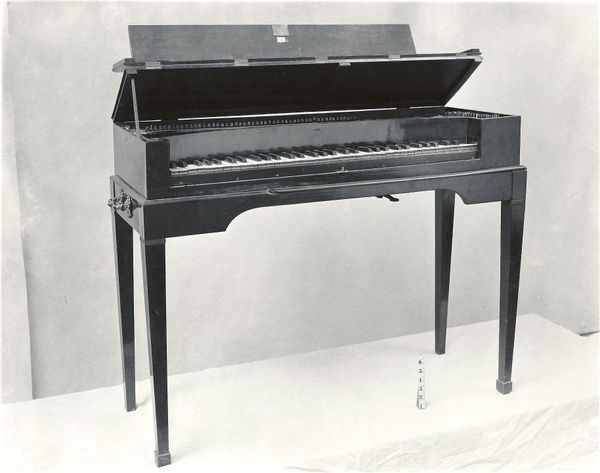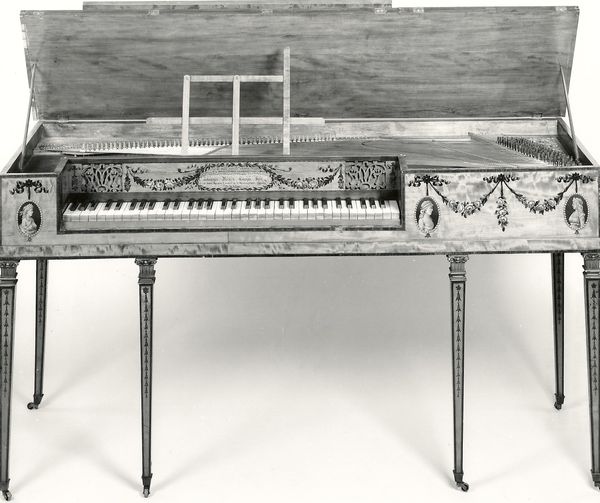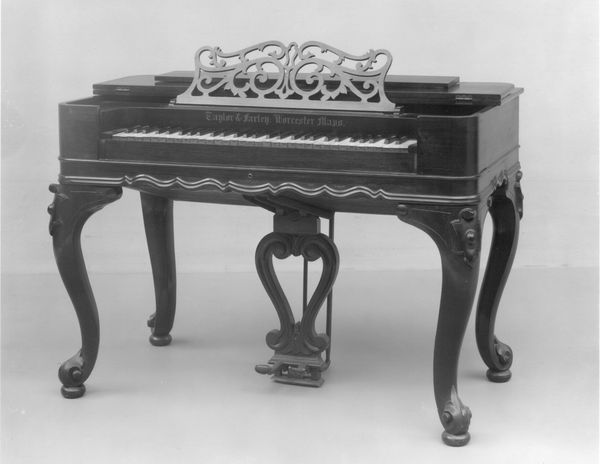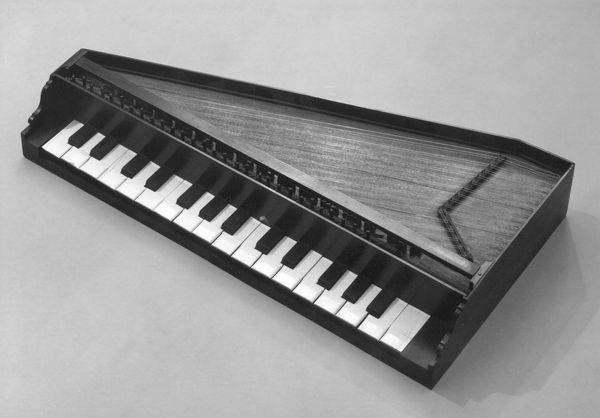
wood
#
sculpture
#
romanticism
#
wood
#
musical-instrument
Dimensions: Case L: 70.9 cm (27-15/16 in.) Case W: 177.5 cm (69-7/8 in.) Case D: 28.2 cm Total H: 88.2 cm Case H. w/o pedal mechanism 34 cm 3-octave span: 48.8 cm (Legs off)
Copyright: Public Domain
This square piano was crafted by Jonas Chickering, a name now synonymous with American piano manufacturing. Note the lyre motif at the front of the instrument. In classical antiquity, the lyre, held by Apollo, symbolized harmony, reason, and artistic inspiration. As the centuries progressed, this connection to music intensified, and in the 18th and 19th centuries, instrument makers frequently integrated the lyre into their designs. Consider this: The piano's emergence in the 18th century wasn't just a technological advancement but a cultural phenomenon, as musical expression moved from the realm of the gods into earthly parlors. The lyre here isn't merely decorative; it speaks of a yearning for a connection to the divine through music, a subconscious echo of ancient ideals. In modern times, as instruments evolved, so did their ability to evoke emotion, engaging the player and listener in a profound dialogue that transcends time.
Comments
No comments
Be the first to comment and join the conversation on the ultimate creative platform.
